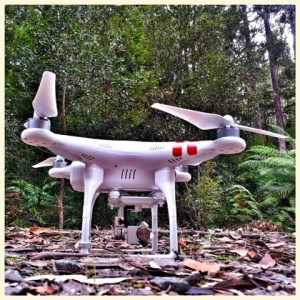One startup wants to use drones that can reforest our increasingly tree-strapped Earth, on a big enough scale to replace slow and expensive hired humans. Source: Gizmodo
The small company, called BioCarbon Engineering, says unmanned aerial vehicles are a great way of covering ravaged woodlands with seedlings that can repopulate the area’s tree population.
Around the world, forests and jungles are still being leveled due to lumber overproduction, strip surface mining, urban expansion, and land use for agriculture.
But UK-based BioCarbon, founded by former NASA engineer Lauren Fletcher, has a plan: Use fixed-wing drones to map the topography of the land, as well as the nutrients and biodiversity.
That info is put into a machine-learning algorithm to generate a “precision planting platform,” says Susan Graham, head of engineering at BioCarbon.
Then, that info is uploaded into a multi-rotor, planting drone, which flies up to 10 feet above the ground, and fires a seed pod at a pre-determined position so that you can increase the survival rate.
Graham calls it “precision forestry,” and can help use drones as a tool for reforestation teams or farmers. “Instead of having a spade, they will have a drone,” she says.
Remote areas or difficult terrain where sending humans can be expensive or messy. “Drones are a tool and you use them when it’s the right location and for the right reason,” CEO Fletcher says. “It doesn’t mean replacement.”
It allows humans to be freed up and do something more productive — one of the things folks who think robots won’t steal our jobs often say.
Drones and robots won’t replace us, but will simply complement the human task force.
Last week, the team presented at United Nations Headquarters in New York at the Solutions Summit as one of 14 winning startups that were invited to the conference, which brought together innovators that want to address the 70-year-old global body’s list of Sustainable Development Goals.
Next, BioCarbon is eyeing expansion, and already has a commitment from a plantation in South Africa to plant trees.
Graham says trying out the service in many types of locations is key: If they can test in different conditions or environments, they will learn more about how to deal with different soils and species — not to mention cultures. Their ultimate goal is to plant a billion trees a year.






